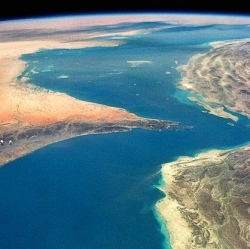
In the past year, growth in the number of people who are connected slowed; estimated at 6.9 percent for 2015, down from 7.4 percent in 2014. Things happened in 2015 that might reverse that trend. Facebook and Alphabet (Google), stepped up campaigns to enable access.
The heart of Alphabet’s assault on the U.N.’s Internet access figures is Project Loon, part of its X Labs division. The project has developed stratospheric helium balloons that can be steered in fleets around the globe and provide high-speed LTE connectivity to mobile devices below (see “10 Breakthrough Technologies 2015: Project Loon”).
In 2015 Loon balloons continued to circumnavigate the globe and connect to devices in places such as Chile, New Zealand, and Australia, where they are being tested in partnership with cellular providers such as Telefónica and Telstra.
In October, Alphabet announced that it had signed an agreement with the government of Indonesia to stage Project Loon’s biggest test yet. In 2016, the three largest cellular carriers serving the nation of 250 million people will start work on trials that integrate Loon balloons into their networks (see “Alphabet’s Stratospheric Loon Balloons to Start Serving Internet to Indonesia”).
Indonesia is a good test bed for Alphabet’s theory that its balloons can get more people online by making it cheaper for telcos to extend Internet infrastructure. The nation’s people are spread across 900 islands of an archipelago of over 17,000, making communication links challenging to deploy. The World Bank estimates that just 17 percent of Indonesians have access to the Internet.
Facebook has designs on the stratosphere, too. In July the company unveiled a solar-powered drone with a 42-meter wingspan, designed to use laser and radio links to beam Internet connectivity to special ground-based receivers (see “Meet Facebook’s Stratospheric Internet Drone”). Scale models of the craft have flown already, and Facebook says flight tests of the full-size craft should be starting soon.
In October we learned that the stratospheric-Internet teams from Alphabet and Facebook are working together, and that they have both lobbied for international agreements in support of high-altitude craft for Internet access (see “Facebook’s Internet Drone Team Is Collaborating with Google’s Stratospheric Balloons Project”). The same month, Facebook struck an agreement with the French company Eutelsat to use the AMOS-6 satellite launching early in 2016 to provide Internet access to large swaths of Africa.
Both Facebook and Alphabet talk in high-minded, altruistic terms about their desire to get more people online. And being seen to help the world can help a company’s image. But the companies also stand to gain valuable new audiences to show ads to, at a time when competition in rich, Internet-savvy countries is intense. (Alphabet has claimed that Loon balloons could be profitable if telcos rented them to expand their networks.)
In September Facebook CEO Mark Zuckerberg announced that its project, called Internet.org, was being renamed Free Basics and that any developer would be able to have its service included in the scheme, which now operates in 32 countries around the world.
Facebook’s troubles are a reminder of the difficulties that can arise when companies from overseas get involved with the complex politics and policy demands of national infrastructure, something that Alphabet and Facebook’s high-flying research projects may run into in 2016 as they get closer to providing real Internet services.
